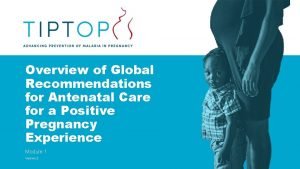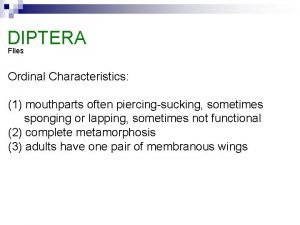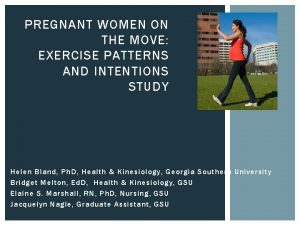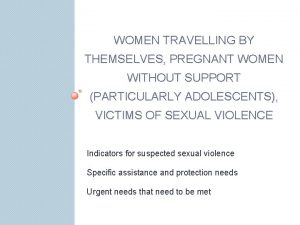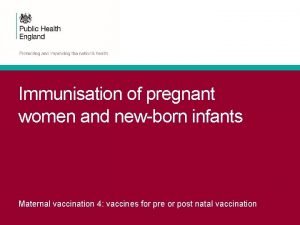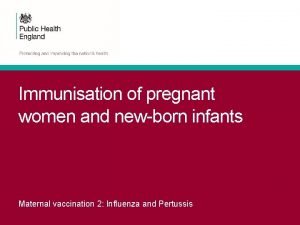PREGNANT WOMEN ON THE MOVE EXERCISE PATTERNS AND






















- Slides: 22

PREGNANT WOMEN ON THE MOVE: EXERCISE PATTERNS AND INTENTIONS STUDY Helen Bland, Ph. D, Health & Kinesiology, Georgia Southern University Bridget Melton, Ed. D, Health & Kinesiology, GSU Elaine S. Marshall, RN, Ph. D, Nursing, GSU Jacquelyn Nagle, Graduate Assistant, GSU

A SPECIAL THANKS TO… Women of Bulloch County, Georgia for their participation Funding from a special grant on obesity prevention from The Georgia University System Board of Regents

BACKGROUND Physical activity among pregnant women is especially important for the health of both the mother and the child. To achieve health benefits such as prevention of gestational diabetes, improved mood, increased energy, and easier labor and delivery (Benjamin, 2010) national guidelines recommend that pregnant women achieve the same amount of physical activity per week as a normal adult (150 minutes of moderate aerobic exercise per week) (ACOG, 2011). Many pregnant women still do not meet the current recommendations.

WHY THIS STUDY? Few studies have explored pregnancy and women’s behaviors, habits, or intentions related to physical activity. Research suggests positive effects of physical activity on pregnancy outcomes, but little is known regarding specific patterns or doses of activity that may be most effective. Though obesity rates are known to be high in the rural Southeast, factors of physical activity during pregnancy have not been adequately explored.

THE STUDY The purpose of this study was to examine exercise patterns, exercise self-efficacy, and intentions of physical activity in a sample of pregnant women in a rural underserved area of Southeast Georgia. This study is a preliminary exploration to launch a program on physical activity during pregnancy and to develop effective interventions.

DESIGN AND PROCEDURES Research methodology followed an analytical, crosssectional, quasi-experimental design. Healthy pregnant women were recruited from a regional obstetrical practice(n=88). Sample methodology was voluntary and data recorded without identifying information. No incentives were offered. The study was approved by the Human Subject Committee of the sponsoring University’s Institutional Review Board.

INSTRUMENTS International Physical Activity Questionnaire (IPAQ)* § Short Form (international reliability = 0. 76) § Elicits information on time spent in light, moderate, and vigorous physical activity, measured by number of minutes in a usual week. *Craig, et al. (2003). International physical activity questionnaire: 12 -country reliability and validity. Medicine & Science in Sports & Exercise, 35, 1381 -1395.

IPAQ MEASURES: PHYSICAL ACTIVITY LEVELS Assigns the following metabolic equivalent (MET) energy expenditure values to walking, moderate, and vigorous intensity activity: 3. 3 METs, 4. 0 METs, and 8. 0 METs; respectively. Low § No activity is reported OR § Some activity is reported but not enough to meet Categories 2 or 3. Moderate (Either of the following 3 criteria) § 3 or more days of vigorous-intensity activity of at least 20 min/day OR § 5 or more days of moderate-intensity activity and/or walking of at least 30 min/day OR § 5 or more days of any combination of walking, moderate-intensity or vigorous intensity activities achieving a minimum of at least 600 MET-min/week. High (Any one of the following 2 criteria) § Vigorous-intensity activity on at least 3 days and accumulating at least 1500 MET -minutes/week OR § 7 or more days of any combination of walking, moderate- or vigorous- intensity activities accumulating at least 3000 MET-minutes/week

INSTRUMENTS (CONT. ) Exercise Self-Efficacy § A 10 -item exercise self-efficacy measure was modified from the Exercise Self-Efficacy Scale (Kroll, Kehn, Ho, & Groah, 2007) § Two statements were adapted for use with this pregnant population: Statement 2 “that I can find means and ways to exercise during pregnancy. ” and Statement 8 “that I can exercise without the consult of my physician. ” The term “physician” was supplemented instead of “therapist or trainer” to reflect the experience of the participants. Transtheoretical Model: Exercise Intention § Short form, one-item staging question assessed the stages of change for exercise (Marcus, et al. , 1992). Five questions, in which only one response may be selected, representing the current stage of change for exercise. A sixth option was added to include the possibility of relapse.

PARTICIPANT PROFILE


RESULTS

PHYSICAL ACTIVITY LEVELS



PHYSICAL ACTIVITY LEVELS • No difference in total physical activity among trimesters (p>0. 05) but significant differences found by geographical location (p<0. 05). • Pregnant women in urban areas were more likely to report higher levels of moderate activity (as reported by mins/day) and higher levels of resistance training. • Higher scores on physical activity were related to normal BMI, second trimester, and Caucasian race.

PHYSICAL ACTIVITY INTENTIONS Reported no current habit and no intention to engage in regular physical activity during pregnancy 8% Reported continuing a usual habit of physical activity during pregnancy 16% Reported having begun some regular physical activity since pregnancy 23% Reported intention to begin some regular physical activity within the next 6 months. 21% Reported engaging in regular physical activity in the past, but not during this pregnancy. 26%

PREGNANCY EXERCISE SELF-EFFICACY (P-ESE) I am confident that I can: x¯ SD 1. Overcome barriers/challenges is I try hard enough. 4. 41 0. 672 2. Find means /ways to exercise during pregnancy. 4. 28 0. 742 3. Accomplish my exercise goals that I set. 4. 32 0. 635 4. Confronted with a barrier, find several solutions to overcome. 4. 16 0. 741 5. Exercise when I am tired. 3. 16 1. 038 6. Exercise even when I am feeling depressed. 3. 58 1. 080 7. Exercise without the support of family/ friends. 4. 08 0. 962 8. Exercise without the consult of my physician 3. 51 1. 180 9. Motivate myself to start exercising again, if I have stopped. 4. 27 0. 739 10. Exercise even if I have no access to gym, exercise, training or rehabilitation facility. 4. 40 0. 720

SELF-EFFICACY AND EXERCISE INTENTION

PREGNANCY INTENTION AND EXERCISE SELF-EFFICACY Most of the pregnant women in the study were currently not exercising (n=53, 60. 92%) Average exercise self-efficacy scores increased as one moved further in their intention to exercise, with mean exercise self-efficacy being categorized as “high” for the group. Those with higher mean exercise self-efficacy scores are significantly more likely to be exercising (p<0. 05)

SUMMARY AND CONCLUSIONS Preliminary data indicate a broad range of habits and intentions toward physical activity during pregnancy. Results confirm national data showing a need for attention to BMI and race in designing interventions to promote health during pregnancy. This study represents beginning efforts to explore patterns of activity to design effective interventions to facilitate health behaviors during pregnancy and address primary prevention of childhood obesity.

OPEN FOR QUESTIONS
 The midwives prayer
The midwives prayer Vitagen
Vitagen 5 days of sample menus for pregnant women
5 days of sample menus for pregnant women Lateral thinking brain teasers
Lateral thinking brain teasers Kegel exercise
Kegel exercise Breast pain pregnancy
Breast pain pregnancy Eclat algorithm
Eclat algorithm The crucible unit test review
The crucible unit test review 3 weeks pregnant ultrasound
3 weeks pregnant ultrasound Dogmatism fallacy example
Dogmatism fallacy example Are mosquito fish guppies
Are mosquito fish guppies Liquor in pregnancy
Liquor in pregnancy Name
Name Richa shukla pregnant
Richa shukla pregnant Richa colon
Richa colon Order diptera characteristics
Order diptera characteristics Dr julia turner
Dr julia turner Holometablous
Holometablous Odds of getting pregnant
Odds of getting pregnant Sperm count in neubauer chamber
Sperm count in neubauer chamber Normal sperm count
Normal sperm count How long is a dogs period
How long is a dogs period How do dogs have sex
How do dogs have sex








